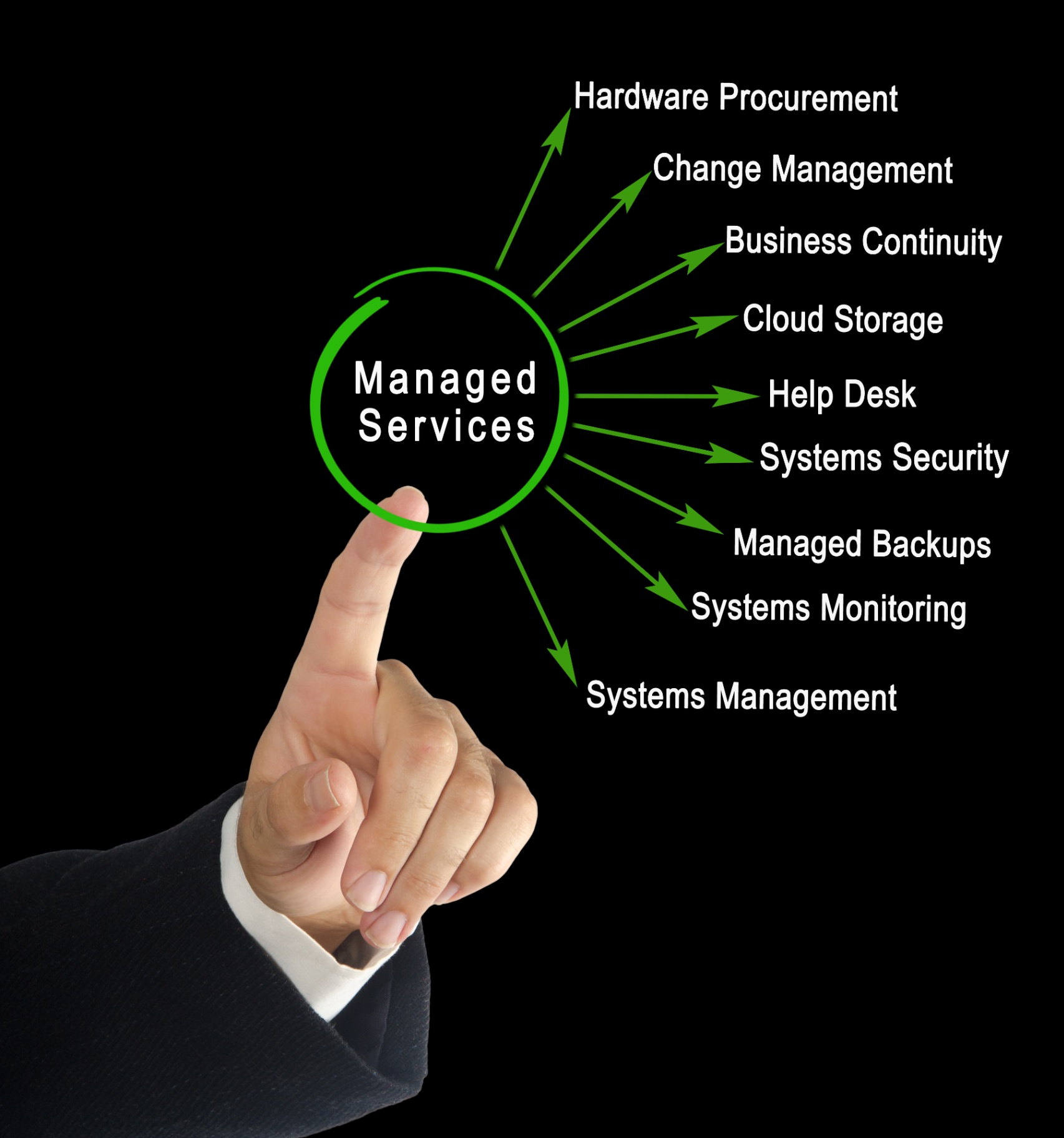Picture this: You're running a growing Connecticut business, and your IT equipment seems to have a mind of its own. Laptops disappear into storage rooms. Software licenses pile up like unused gym memberships. That server you bought three years ago? It's now costing more in repairs than a new one would cost.
If this sounds familiar, you're not alone. Most small and medium businesses in Connecticut are sitting on hidden savings they don't even know exist. The secret lies in something called IT Asset Lifecycle Management (ITAM) – a fancy term for something surprisingly simple: knowing what you have, when you bought it, how it's performing, and when to replace it.
Here's the thing most business owners don't realize: proper asset management isn't just about organization. It's about unlocking serious cost savings while preventing the kind of IT disasters that can shut down operations for days.
What IT Asset Lifecycle Management Really Means
Let's strip away the jargon. IT Asset Lifecycle Management is basically being smart about your technology investments from day one through retirement. Think of it like maintaining a fleet of company vehicles – you wouldn't buy cars without researching them, ignore maintenance schedules, or drive them until they literally break down on the highway.
Yet that's exactly what many Connecticut SMBs do with their IT equipment.

ITAM tracks every piece of technology in your business through five key stages:
Planning and Procurement – Actually figuring out what you need before you buy it
Deployment and Integration – Getting new equipment set up properly and securely
Maintenance and Optimization – Keeping everything running smoothly
Performance Monitoring – Knowing when something's about to fail
Retirement and Disposal – Getting rid of old equipment safely and at the right time
Most businesses handle maybe two of these stages well. The companies that master all five? They're the ones saving 15-30% on their annual IT costs while experiencing fewer breakdowns and security issues.
The Hidden Cost of Doing Nothing
Before we dive into the savings, let's talk about what happens when you don't manage your assets properly. I've seen Connecticut businesses lose thousands of dollars in ways that could have been completely avoided:
The Ghost Equipment Problem: A manufacturing company in Hartford discovered they had $40,000 worth of laptops sitting in a storage room – some still in boxes, others with expired warranties. They'd been buying new equipment while perfectly good devices collected dust.
The License Trap: A professional services firm was paying for 50 Microsoft Office licenses but only had 35 employees. Worse yet, they were simultaneously paying penalties for being under-licensed on their accounting software. Nobody was tracking what they actually owned versus what they needed.
The Emergency Replacement Spiral: When critical equipment fails unexpectedly, you're stuck paying premium prices for rushed replacements. One Connecticut law firm spent $8,000 on an emergency server replacement that would have cost $3,500 with proper planning.
These aren't unusual situations. They're the predictable result of treating IT equipment like office supplies instead of strategic business assets.
The Five Stages That Unlock Savings
Stage 1: Strategic Planning and Procurement
Smart asset management starts before you buy anything. Instead of reacting to problems or impulse-buying the latest technology, successful businesses plan their IT investments like they plan their budgets.
This means asking the right questions: What do we actually need this equipment to do? How long do we need it to last? What's our total budget for the next three years, not just this purchase?
A Connecticut accounting firm we work with used to buy new computers when employees complained about slow performance. Now they plan replacements based on age, usage patterns, and business growth projections. Result? They spend 25% less annually while their team has better, more reliable equipment.
The procurement stage also includes negotiating better deals with vendors, standardizing on equipment types (which reduces complexity and support costs), and timing purchases to take advantage of business tax benefits.
Stage 2: Proper Deployment and Integration
Getting new equipment set up correctly from day one prevents countless headaches down the road. This isn't just about unboxing devices and handing them to employees.

Proper deployment includes:
- Installing and configuring security software before the device connects to your network
- Setting up automated backup systems
- Documenting warranties, service agreements, and support contacts
- Creating user accounts with appropriate access levels
- Installing monitoring software so you can track performance and issues
Many businesses skip these steps to save time upfront, then spend far more time dealing with security problems, data loss, and technical support calls later.
Stage 3: Proactive Maintenance and Optimization
This is where the real savings happen. Instead of waiting for equipment to break, proactive maintenance keeps everything running smoothly while extending useful life.
Regular maintenance includes:
- Installing security updates and patches
- Cleaning temporary files and optimizing storage
- Monitoring performance metrics to identify problems early
- Updating software to maintain compatibility
- Planning hardware upgrades before they become emergencies
One Connecticut manufacturing company extended their server lifespan from four years to seven years through proper maintenance, saving over $15,000 in premature replacement costs.
The key is having systems in place to monitor everything automatically. Modern remote monitoring tools can alert you to potential problems before they cause downtime.
Stage 4: Performance Monitoring and Predictive Replacement
Here's where ITAM gets really powerful. Instead of guessing when equipment might fail, you can actually predict it based on performance data.
Modern monitoring tools track metrics like:
- Hard drive health and expected failure dates
- Memory usage trends that indicate when upgrades are needed
- Network performance that shows when equipment is becoming a bottleneck
- Battery life on mobile devices
- Software performance and compatibility issues
This predictive approach lets you replace equipment during planned maintenance windows rather than during crisis situations. The cost difference is enormous – both in terms of the equipment itself and the business disruption avoided.
Stage 5: Strategic Retirement and Disposal
The final stage is often overlooked, but it's crucial for both cost savings and security. Properly retiring old equipment means:
- Securely wiping all data to prevent breaches
- Recovering any resale value from equipment that still has life left
- Properly disposing of equipment that can't be reused
- Canceling software licenses and service contracts
- Using the retirement as an opportunity to plan the next procurement cycle
Many businesses keep paying for software licenses on equipment they no longer use, or worse, they dispose of equipment without properly wiping sensitive data.

Real-World Savings for Connecticut SMBs
Let's talk numbers. Businesses that implement proper ITAM typically see:
20-30% reduction in annual IT costs through better procurement timing, license optimization, and extended equipment lifecycles.
50-70% reduction in emergency IT expenses because problems are predicted and addressed during planned maintenance.
15-25% improvement in employee productivity because equipment performs better and fails less frequently.
Elimination of compliance penalties from proper software license management.
Here's a real example from a Connecticut professional services firm with 25 employees:
Before ITAM: Annual IT costs of $85,000, including $12,000 in emergency repairs and $8,000 in over-licensing fees.
After ITAM: Annual IT costs of $62,000, with emergency repairs down to $2,000 and licensing costs optimized. Net annual savings: $31,000.
Those savings compound year after year. Over five years, proper asset management saved this firm over $150,000 – enough to fund significant business growth initiatives.
Common Pitfalls Connecticut SMBs Should Avoid
Even businesses that understand the importance of asset management often make predictable mistakes:
The Spreadsheet Trap: Tracking assets in Excel works when you have five computers. When you have 50+ devices across multiple locations, spreadsheets become a maintenance nightmare that's always out of date.
The "Set It and Forget It" Approach: Installing asset management software isn't enough. You need processes, responsibilities, and regular reviews to keep the system current and useful.
Focusing Only on Hardware: Many businesses track laptops and servers but ignore software licenses, mobile devices, and cloud services. These "invisible" assets often represent 40-60% of total IT costs.
Ignoring Total Cost of Ownership: The purchase price is just the beginning. Power consumption, maintenance, support costs, and end-of-life disposal all affect your true asset costs.
Reactive Replacement: Waiting until equipment fails means you're always paying premium prices and dealing with business disruption.
The FoxPowerIT Approach to Asset Management
At FoxPowerIT, we've developed a systematic approach to help Connecticut SMBs unlock these hidden savings without the complexity of managing everything internally.
Our approach combines automated monitoring tools with human expertise. We track your assets automatically while providing strategic guidance on timing replacements, optimizing licenses, and planning for growth.

We start with a comprehensive audit of your current IT assets – something many businesses have never done properly. This audit often reveals immediate savings opportunities worth thousands of dollars.
From there, we implement monitoring systems that track performance, predict failures, and optimize costs automatically. But unlike purely automated solutions, we provide human oversight to ensure the recommendations make sense for your specific business needs.
Our clients typically see their asset management investment pay for itself within 3-6 months through reduced emergency costs and optimized licensing alone.
Getting Started: Your First Steps
Ready to unlock your own hidden savings? Here's how to begin:
Step 1: Conduct an Asset Audit
Create a complete inventory of everything you currently own. Include purchase dates, warranty information, current condition, and estimated replacement costs. This baseline is essential for measuring improvement.
Step 2: Implement Basic Monitoring
Start tracking the health and performance of your most critical assets. Even simple monitoring can prevent costly emergency failures.
Step 3: Standardize Your Procurement Process
Instead of buying equipment reactively, create a process for evaluating needs, comparing options, and timing purchases strategically.
Step 4: Plan Your Replacement Cycles
Based on your audit and monitoring data, create a 3-year plan for replacing equipment before it fails or becomes a business liability.
Step 5: Optimize Your Software Licenses
Review what you're paying for versus what you're actually using. Most businesses can cut 20-30% from their software costs immediately.
For many Connecticut SMBs, the smartest approach is partnering with an experienced managed service provider who can handle the technical complexity while you focus on running your business.
The Bottom Line
IT Asset Lifecycle Management isn't complicated, but it does require systematic attention. The businesses that master it gain a significant competitive advantage through lower costs, better reliability, and more strategic technology investments.
The hidden savings are real, and they're substantial. But they only reveal themselves to businesses willing to move beyond reactive IT management toward a more strategic approach.
Your technology should be working for your business, not against it. When you know what you have, how it's performing, and when to replace it, you transform IT from a necessary expense into a strategic advantage.
The question isn't whether you can afford to implement proper asset management. The question is whether you can afford not to.
Ready to uncover your hidden savings? Let's start with that asset audit and see what opportunities your business has been leaving on the table.

